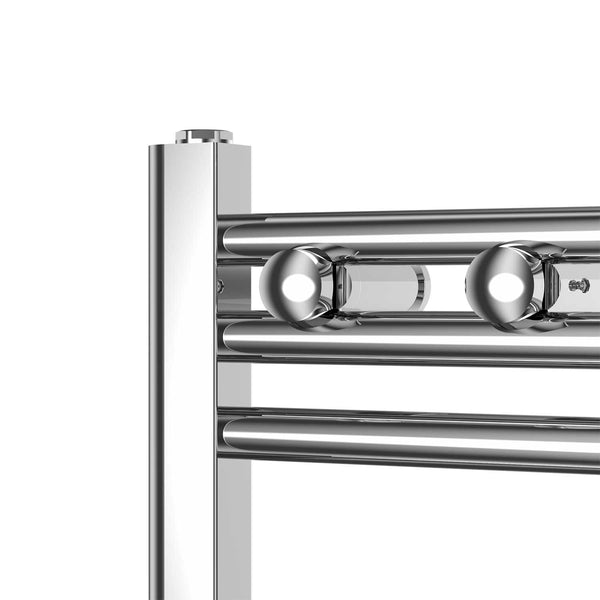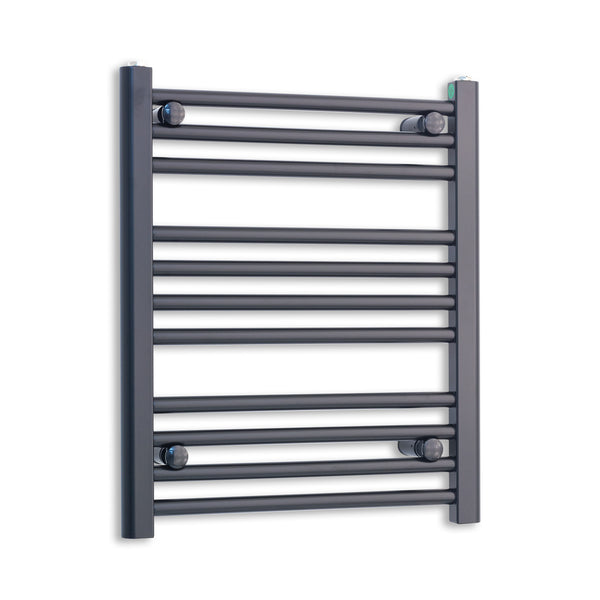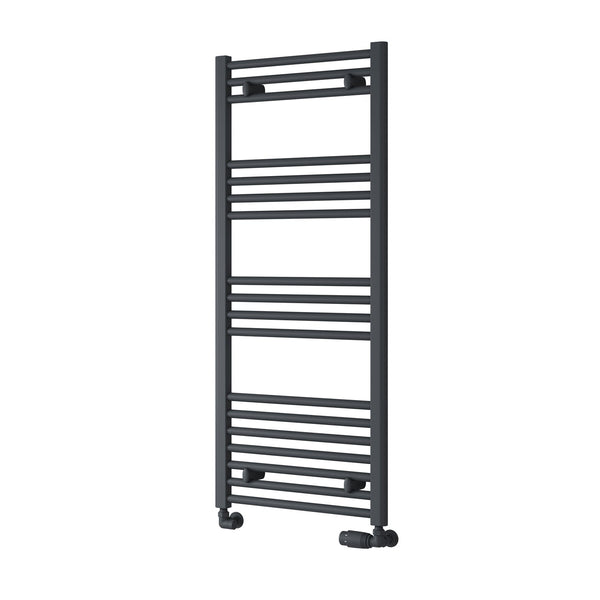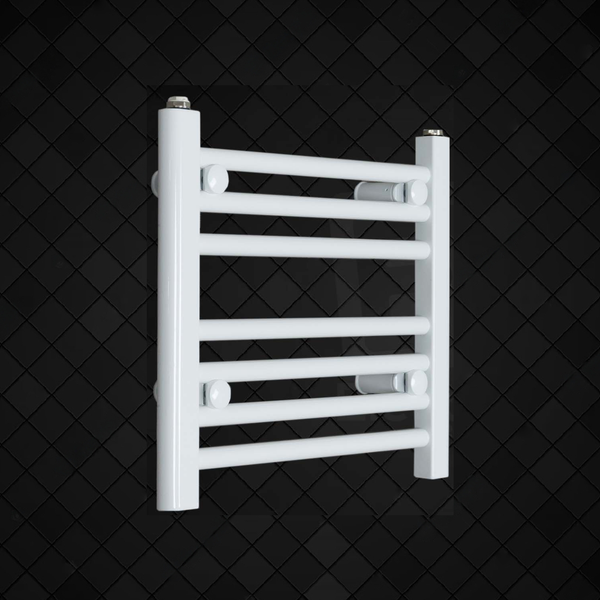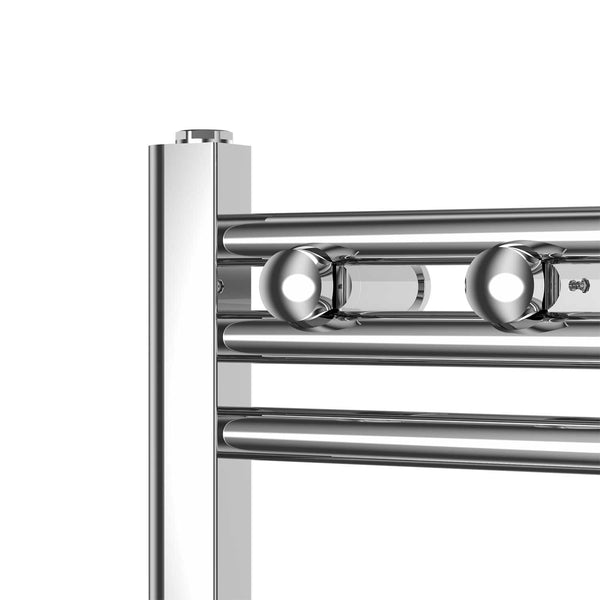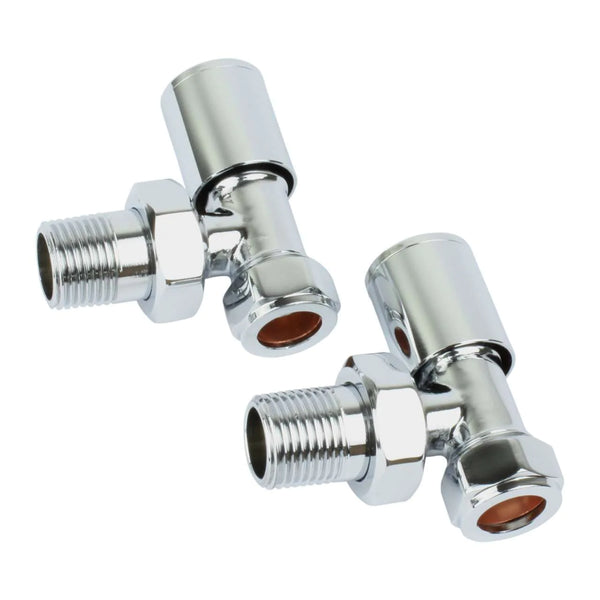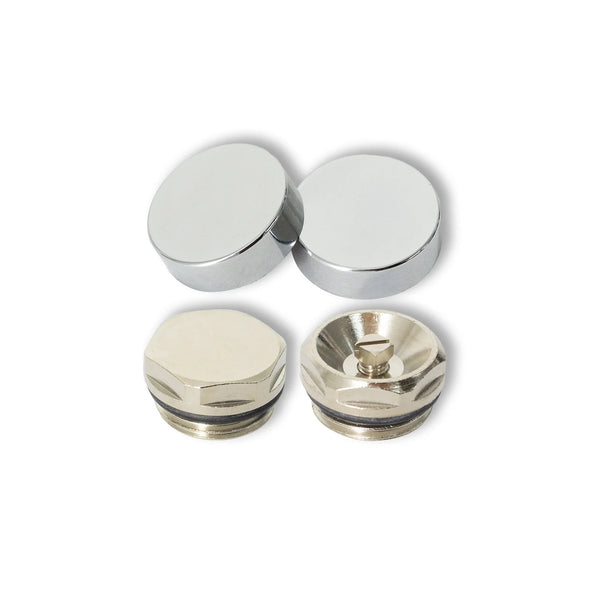Maximising Heat: A Guide to Choosing the Right Size Towel Rail for UK Bathrooms

1. Introduction: Beyond Warm Towels – Towel Radiators as Bathroom Heaters
The Evolving Role of Towel Radiators:
Towel radiators have evolved from being a luxury item solely for warming towels to a functional and aesthetic component of modern bathroom design, often expected to contribute to room heating. They serve a dual purpose: providing the comfort of warm, dry towels and enhancing the ambient temperature of the bathroom. highlights their "practical use and aesthetic appeal." A broader consumer trend in home improvement reflects a growing demand for products that offer both practical benefits and enhance the design of living spaces. This means manufacturers need to innovate in both areas, and consumers need guidance on balancing these two aspects without compromising heating performance.
The Importance of Informed Choices for Maximum Heat:
Achieving maximum heat output and a comfortably warm bathroom depends on selecting the appropriately sized (BTU output) and type of towel radiator. This is particularly critical if the towel radiator is intended to be not just a supplementary heat source but a primary or significant one. An uninformed choice can result in an underpowered radiator that fails to adequately heat the room, or an oversized one leading to energy wastage and excessive costs.
The core query “Maximum Heat” points to a common pain point: towel radiators are often perceived or experienced as insufficient for room heating. This guide should directly address this by demystifying the technical aspects and empowering users to select models that can genuinely serve as effective heat sources, moving beyond the “warm towels only” expectation.
What This Guide Will Cover:
This guide will offer UK homeowners expert advice on understanding how towel radiators work, the critical factors affecting their heat output, and how to accurately calculate the required size. It will compare different types, detail best installation practices for safety and efficiency, and offer tips to maximise performance and longevity.
2. Understanding Towel Radiator Basics
2.1. How Towel Radiators Generate Heat: The Science Explained
-
Fundamental Principles: Regardless of type, towel radiators work by heating their external surface. This heat is then transferred to towels placed on them and to the surrounding bathroom environment.
-
Heat Transfer Mechanisms: The warmth you feel from a towel radiator and its ability to heat your bathroom relies on a combination of three primary heat transfer processes:
- Conduction: Direct transfer of heat from the radiator’s hot surface to anything in contact with it, most notably your towels. The efficiency of this process depends on the material of the radiator and the towel.
- Convection: The heating element or circulating hot water warms the bars or tubes of the radiator, which then heat the surrounding air. The warm air rises and cooler air moves in to replace it, creating a convection current that gradually raises the bathroom temperature.
- Radiation: The heated surface emits infrared radiation, which travels through the air and warms objects or surfaces it strikes—including walls, fixtures, and people—without directly heating the intervening air.
-
Heat Generation in Different Types: The method of heating the radiator surface varies by type:
- Central Heating (Hydronic): Connected to your home’s main boiler, hot water circulates through the radiator’s pipes or tubes. Heat is conducted through the material and released by convection and radiation.
- Electric (Liquid-Filled/Wet Type): Contains a sealed thermal fluid (water or special oil). An electric element heats the fluid, which then circulates internally to warm the radiator’s surface.
- Electric (Dry Element): Uses heating elements (wires or carbon fibre) integrated directly into the rails or panels, converting electrical energy into heat without a liquid medium—usually making these models lighter.
- Dual Fuel: Combines central heating and an internal electric element, allowing you to use boiler-heated water, electricity, or both for maximum flexibility.
2.2. An Overview of Towel Radiator Types: A Comparative Assessment
Central Heating (Hydronic) Towel Radiators:
-
Definition and Functionality: These connect to your home's existing central heating system, much like standard radiators. They provide heat when your main heating system is active, offering a consistent temperature synchronised with your home's overall heating schedule.
-
Common Materials: Typically made from steel (carbon steel), stainless steel, or aluminium, chosen for their heat conductivity and durability.
Electric Towel Radiators:
-
Definition and Functionality: These operate independently of the central heating system, powered by mains electricity via a fused spur. This autonomy makes them ideal for bathrooms where extending central heating pipework is impractical, or for providing heat when the main system is off, such as drying towels in warmer months. Many modern electric towel radiators include programmable timers and adjustable thermostats for enhanced control and energy efficiency.
-
Internal Mechanisms: Can be liquid-filled, where an element heats an internal fluid, or use dry heating technology where elements directly heat the radiator structure.
Dual Fuel Towel Radiators:
-
Definition and Functionality: Offering ultimate flexibility, dual fuel models connect to both central heating pipework and an electrical supply. This allows the user to choose the heating source: central heating during colder periods and electricity for independent operation (e.g., summer towel warming or a quick bathroom heat-up). Switching between modes is usually managed by valves and an electrical switch. A “T-piece” connector is required in the plumbing to accommodate both water flow and the electric element.
-
Components: Consist of the radiator body, valves for central heating connection, and an electric heating element.
Other Considerations:
-
Designer Towel Radiators: These models prioritise aesthetic impact, often becoming a focal point or “statement piece” in the bathroom. They come in a vast array of unique styles, shapes, sizes, and premium finishes, catering to specific interior design themes. While stylish, their heat output must still be matched to the room’s needs.
-
Compact Models: Designed for smaller bathrooms, en-suites, or cloakrooms where wall space is at a premium. These space-saving designs aim to provide efficient heating and towel drying without overwhelming the room.
The choice of towel radiator type (hydronic, electric, dual fuel) is influenced by a home’s existing heating infrastructure, installation costs (plumbing and electrical work), and anticipated running costs based on UK energy prices (gas vs. electricity). This is a practical and financial calculation, not just a preference.
The term “towel radiator” can create varying expectations. While all models aim to warm towels, their ability to heat a room differs based on heat generation mechanism (e.g., hot water volume vs. localised electric element) and thermal mass (liquid-filled vs. dry element).
Achieving “maximum heat” requires more than selecting a “radiator.” The proliferation of “designer” and “compact” towel radiator models highlights that bathroom space is often a constraint in UK homes, leading consumers to prioritise aesthetics and space efficiency. However, this can compromise heating power if style or footprint are selected over calculated BTU output required by the room.
3. Decoding Heat Output: The Factors That Really Matter
3.1. Material and Finish: A Significant Impact on BTUs
A towel radiator’s heat output isn’t solely determined by its size; the materials used and the surface finish significantly affect how effectively it transfers heat to your bathroom.
The Role of Core Materials in Heat Conductivity and Retention:
-
Mild Steel (Carbon Steel): Common due to affordability, ease of manufacture, and good heat conductivity. Steel radiators retain heat well, radiating warmth after the heat source is off. However, untreated mild steel can rust in humid bathroom environments without proper inhibitors or coatings.
-
Stainless Steel: Highly resistant to rust and corrosion, ideal for humid conditions. It conducts heat effectively and often outperforms chrome-plated mild steel in heat output and retention.
-
Aluminium: Aluminium is a standout performer in terms of thermal conductivity, meaning it heats up significantly faster than steel or cast iron. Because it’s an efficient emitter of heat, aluminium radiators often require less hot water volume to achieve the same heat output as steel models, which can contribute to energy savings and responsiveness. They are also lightweight, which can make installation easier. The downside is that they cool down quickly once the heat source is off. Aluminium is also a recyclable material, offering an environmental benefit.
-
Brass: While mentioned as a raw material, brass is less common for the main body of contemporary towel radiators compared to steel or aluminium. It is often used in traditional “ball-joint” style towel radiators or for valves and fittings due to its classic look and corrosion resistance.
The Truth About Finishes – More Than Aesthetics, A Key Heat Output Determinant:
-
Chrome Plating: Chrome is an extremely popular finish due to its bright, reflective, modern appearance and its ability to resist corrosion, keeping the radiator looking good over time. However, a chrome finish significantly reduces a radiator’s heat output compared to other finishes.
-
Why Chrome Emits Less Heat: The primary reason is surface emissivity. Chrome has a low emissivity value, meaning it tends to hold heat rather than radiate it. The chrome plating acts as a barrier over the core material (usually steel), which the heat must penetrate. Additionally, the reflective properties of chrome can reflect some heat back into the radiator instead of emitting it into the room.
-
The Extent of Reduction: Homeowners should expect a chrome-plated towel radiator to emit approximately 20–30% less heat compared to an identical model with a painted finish (e.g., white). Some sources suggest a slightly lower reduction of around 15%. Given the consistency around the 20–30% figure, this range should be highlighted as a significant factor. A strong aesthetic preference for chrome necessitates selecting a larger or higher-efficiency radiator to achieve the same room temperature, impacting cost, wall space, and visual design.
-
Painted Finishes (Usually on Steel or Aluminium): These generally offer superior heat emission compared to chrome. The colour of the paint also has a minor impact:
- White (Standard Gloss/Matt): A standard white painted finish is generally considered the most efficient for heat output. It forms the baseline against which other finishes are compared.
- Anthracite/Grey: Popular contemporary colours may result in a slight reduction in heat output, around 5% less than an equivalent white radiator. This difference is often negligible in practice but could matter in marginally sized situations.
- Black: Black painted radiators may emit around 10% less heat than white counterparts. Although black surfaces absorb heat well, paint chemistry and surface texture affect emission.
- Other Custom Colours: Darker paint colours tend to emit slightly less heat than lighter colours or standard white.
-
Stainless Steel (Polished/Brushed): The finish of stainless steel also matters. Highly polished stainless steel behaves similarly to chrome, with lower emissivity and reduced heat radiation compared to painted or brushed finishes. A brushed finish may offer slightly better emission than polished but still less than painted. Stainless steel’s primary advantage is its inherent corrosion resistance.
-
Table 3.1: Impact of Material and Finish on Heat Output (Approx. % Difference Relative to Standard White Painted Mild Steel Radiator)
| Core Material | Surface Finish | Approx. Heat Output Efficiency (%)* | Key Considerations |
| Mild Steel | White Paint | 100% | Baseline standard, good heat output. |
| Mild Steel | Anthracite Paint | ~95% | Minor reduction, popular modern look. |
| Mild Steel | Black Paint | ~90% | Noticeable reduction, bold aesthetic. |
| Mild Steel | Chrome Plating | ~70–80% | Significant reduction, choose larger size if primary heat. |
| Aluminium | White Paint | ~110–120%** | Excellent conductor, rapid heat-up. |
| Aluminium | Anthracite Paint | ~105–115%** | Combines high efficiency with modern colour. |
| Aluminium | Chrome Plating | ~80–95% (vs white aluminium)** | Stylish but reduces aluminium's heat advantage. |
| Stainless Steel | Brushed/Satin Finish | ~90–95% (vs painted steel)** | Excellent durability, moderate heat output. |
| Stainless Steel | Polished Finish | ~75–85% (vs painted steel)** | Similar to chrome in reduced output, very durable. |
This table provides approximate values to illustrate general trends. Actual heat output can vary based on specific radiator design and manufacturer specifications.
Percentages for aluminium and stainless steel reflect their inherent conductivity differences compared to mild steel; finish effects are then proportionally applied to this base material capability.
Aluminium generally has higher conductivity and efficiency.
3.2. Power Source Nuances and Heat Generation
The way a towel radiator is powered directly influences its heat generation characteristics and control.
- Central Heating Systems: The heat output of a hydronic towel radiator depends on the boiler’s power, the temperature of the circulating hot water, and the flow rate. The radiator acts as a heat exchanger; changes in boiler performance or system balancing can affect the delivered heat.
- Electric Heating Elements: For electric towel radiators and dual fuel models in electric mode, the wattage (W) of the internal heating element determines its heat output. Electric heating is 100% efficient at the point of use, converting all electrical energy into heat. However, cost-effectiveness depends on electricity versus gas prices. Heating elements typically range from 100 W (towel warming) to 1000 W or more (significant room heating). Selecting wattage by bathroom size (Small: 150–300 W, Medium: 400–600 W, Large: 700–1000 W) is crucial when the radiator serves as the primary heat source.
- Dual Fuel Systems: In central heating mode, performance matches hydronic radiators. In electric mode, heat output depends solely on the electric element’s wattage. Note that electric-mode output may differ if the element is sized for towel warming rather than full room heating.
3.3. Design Elements: Size, Shape, and Surface Area
Beyond material and power, the physical design of the towel radiator is also a significant factor.
- Overall Dimensions (Height and Width): These determine the total surface area available for heat emission. A larger radiator typically has a higher BTU output.
- Number, Spacing, and Configuration of Bars/Tubes: More bars or a design that maximizes surface area increases heat output. The spacing affects airflow and towel drying efficiency.
- Projection from Wall: The distance from the wall influences convective airflow. Towels draped over the radiator increase its effective projection; adequate space is needed for efficient convection.
While aluminium’s rapid heating and high conductivity are advantageous, its quick cool-down can lead to temperature fluctuations if the heating system cycles frequently. Materials with greater thermal mass (steel, stainless steel) may provide a more stable ambient temperature, enhancing perceived comfort.
The significant heat output reduction with chrome finishes means selecting a chrome towel radiator based on aesthetics and stated BTU—without accounting for finish de-rating risks underperformance if used as a primary heat source. Accurate, finish-adjusted BTU calculations are therefore essential.
4. Calculating Your Perfect Towel Radiator Size: The BTU Deep Dive
4.1. What is BTU (British Thermal Units) and Why is it Critical?
- BTU Definition: A British Thermal Unit (BTU) is the energy required to raise one pound of water by one degree Fahrenheit. One BTU equals 1055 joules.
- Significance for Radiators: A radiator’s BTU rating measures its heat output capacity per hour (BTU/hr). A higher BTU rating indicates greater heating ability.
- Criticality for Bathroom Heating: Choosing the correct BTU output is vital; too low leaves the bathroom cold, too high causes overheating and wasted energy.
- BTU vs. Watts: Electric appliances are rated in Watts. One Watt equals approximately 3.412 BTU/hr. Conversion is necessary to match electric elements to BTU requirements.
4.2. Using a BTU Calculator: Key Inputs for UK Bathrooms
- Purpose: Online BTU calculators estimate room heating requirements by assessing heat loss and desired temperature.
Common Inputs Required by UK Online Calculators
- Room Dimensions: Length, width, and height (metres or feet) to calculate volume.
- Room Type: Specify “Bathroom” for higher temperature targets and different heat-loss characteristics (e.g., tiled surfaces).
- Window Area and Type: Total window area and glazing type (single or double) affect heat loss. Double glazing provides better insulation.
- Insulation Levels: Wall, roof, and floor insulation performance (good, average, poor) impacts heat retention.
- External Walls: Number and construction type (solid brick, cavity wall, timber frame) of walls exposed to outside.
- Location Factors: Whether spaces above and below the bathroom are heated or unheated (e.g., loft, garage) affects heat loss.
- Room Exposure: Overall exposure (sheltered, average, exposed) accounts for wind chill effects.
- Availability: Many UK radiator retailers offer free online BTU calculators.
- Disclaimer: Calculators provide estimates; for complex cases or uncertainty, consult a qualified heating engineer. Most calculators use the UK ΔT50 standard.
4.3. Step-by-Step BTU Calculation Example for a Typical UK Bathroom
This section will walk through a practical example using a representative UK bathroom to illustrate how inputs are used.
Scenario Definition:
This table provides approximate values to illustrate general trends. Actual heat output can vary based on specific radiator design and manufacturer specifications.
Percentages for aluminium and stainless steel reflect their inherent conductivity differences compared to mild steel; finish effects are then proportionally applied to this base material capability.
Aluminium generally has higher conductivity and efficiency.
- Aluminium: Aluminium is a standout performer in terms of thermal conductivity, heating up significantly faster than steel or cast iron. Because it’s an efficient emitter of heat, aluminium radiators often require less hot water volume to achieve the same heat output as steel models, contributing to energy savings and responsiveness. They are also lightweight, making installation easier. The downside is that they cool down quickly once the heat source is off. Aluminium is also recyclable, offering an environmental benefit.
- Brass: While used in traditional “ball-joint” style towel radiators and for valves and fittings due to its classic look and corrosion resistance, brass is less common for the main body of contemporary towel radiators compared to steel or aluminium.
The Truth About Finishes – More Than Aesthetics, A Key Heat Output Determinant:
Chrome Plating: Chrome is popular for its bright, reflective appearance and corrosion resistance, but a chrome finish significantly reduces a radiator’s heat output compared to other finishes.
Why Chrome Emits Less Heat: Chrome has low surface emissivity, meaning it holds heat rather than radiate it. The plating acts as a barrier over the core material, and its reflective properties can bounce heat back into the radiator.
The Extent of Reduction: Expect about 20–30% less heat output from a chrome-plated radiator versus the same model in a painted finish (some sources suggest 15%). Choosing chrome therefore often means selecting a larger or higher-efficiency radiator to achieve the same room temperature, affecting cost, space and aesthetics.
Painted Finishes (Steel or Aluminium): Painted finishes generally emit more heat than chrome. Colour matters slightly:
- White (Gloss/Matt): The most efficient baseline finish for heat emission.
- Anthracite/Grey: Around 5% less heat than white, usually negligible in practice.
- Black: May emit about 10% less heat than white, as paint chemistry and texture affect emissivity.
- Other Custom Colours: Darker colours tend to emit slightly less heat than lighter ones.
Stainless Steel (Polished/Brushed): Finish affects emissivity: polished surfaces behave like chrome with lower heat radiation, while brushed finishes emit slightly more heat but still less than painted surfaces. Stainless steel’s main advantage is corrosion resistance.
